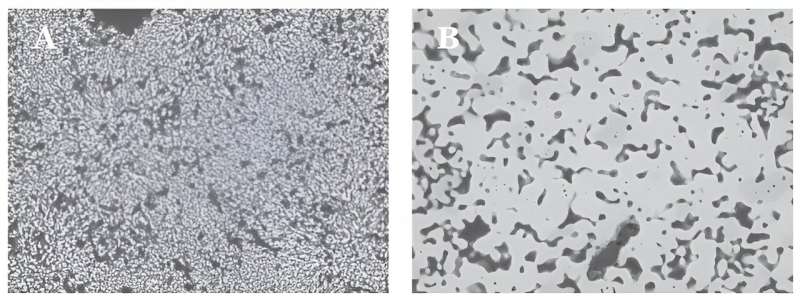This article has been reviewed according to Science X's editorial process and policies. Editors have highlighted the following attributes while ensuring the content's credibility:
fact-checked
trusted source
proofread
New research shows how biofuels affect cement production

The production of cement and quicklime is energy demanding and causes high carbon dioxide emissions. This is because the fuel, which is used for heating, and the limestone, which is converted into quicklime at high temperatures, emits carbon dioxide. By replacing fossil fuels with renewable ones, emissions can be reduced by up to 40%.
"A shift from coal to biomass can affect product quality, through reactions at high temperatures," says Karin Sandström, doctoral student. Sandström defends her doctoral thesis on May 31.
The production of quicklime and cement takes place in direct-fired kilns, which means that the fuel, raw material and product are in direct contact with each other. The ash formed after combustion can react with the product. For quicklime, which requires a high calcium oxide content, this can have a negative effect on the product quality.
In laboratory studies, Sandström, doctoral student at the Department of Applied Physics and Electronics and the Industrial Doctoral School at Umeå University, and her colleagues have seen that the microstructure of quicklime alters when the limestone is exposed to ash from biofuels at high temperatures. They have also investigated how impurities found in limestone quarries affect the quality of the quicklime product.
The volatilization of trace and minor elements during cement clinker formation was studied both in a conventional combustion atmosphere and in an atmosphere with a high carbon dioxide content, corresponding to electrified heating.
"For the vast majority of elements, no difference between the two atmospheres was determined. However, a high carbon dioxide content reduced the evaporation of potassium, sodium, and sulfur, which can affect the cement quality. This should be further studied," says Sandström.
Sandström's research has contributed to an increased understanding of how impurities, either introduced via biomass or raw material, affect the product quality in quicklime production—and how electrified heating affects cement quality. This knowledge is important in the transition to more sustainable cement and quicklime production.
"Future studies can bridge the gap between lab-scale experiments and large-scale processes, with the long-term goal of achieving efficient and sustainable production of cement and quicklime with reduced carbon dioxide emissions into the atmosphere," says Sandström.
More information: Effects of impurities on phase equilibrium in quicklime and cement clinker production. umu.diva-portal.org/smash/record.jsf?pid=diva2%3A1855537&dswid=5100

















